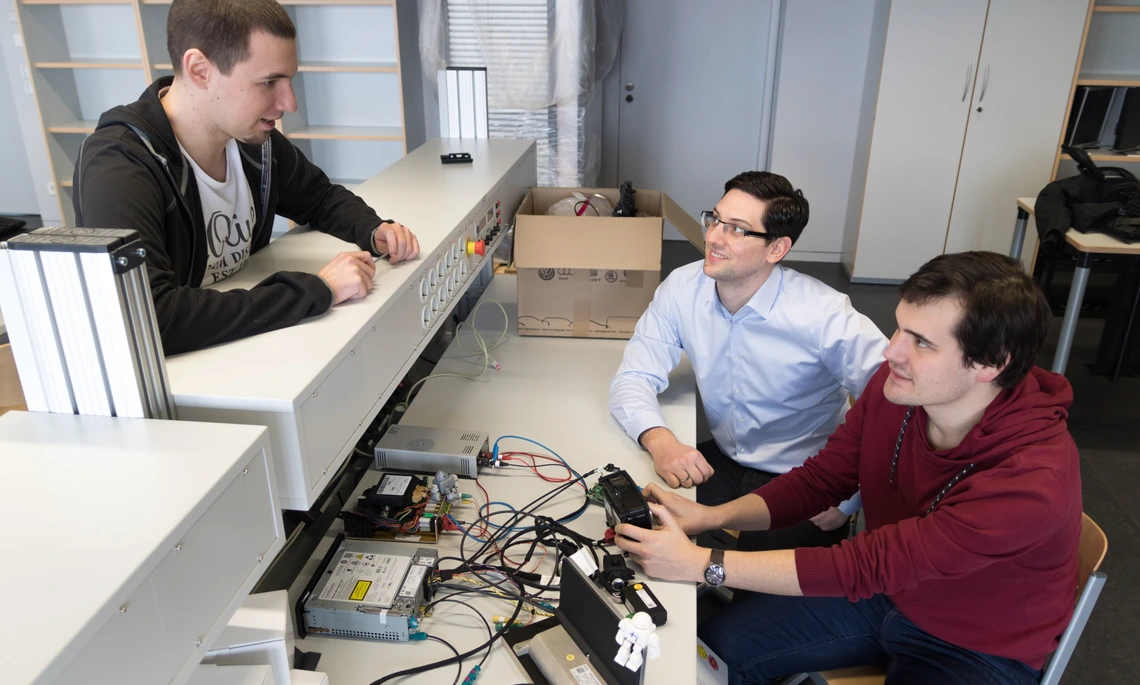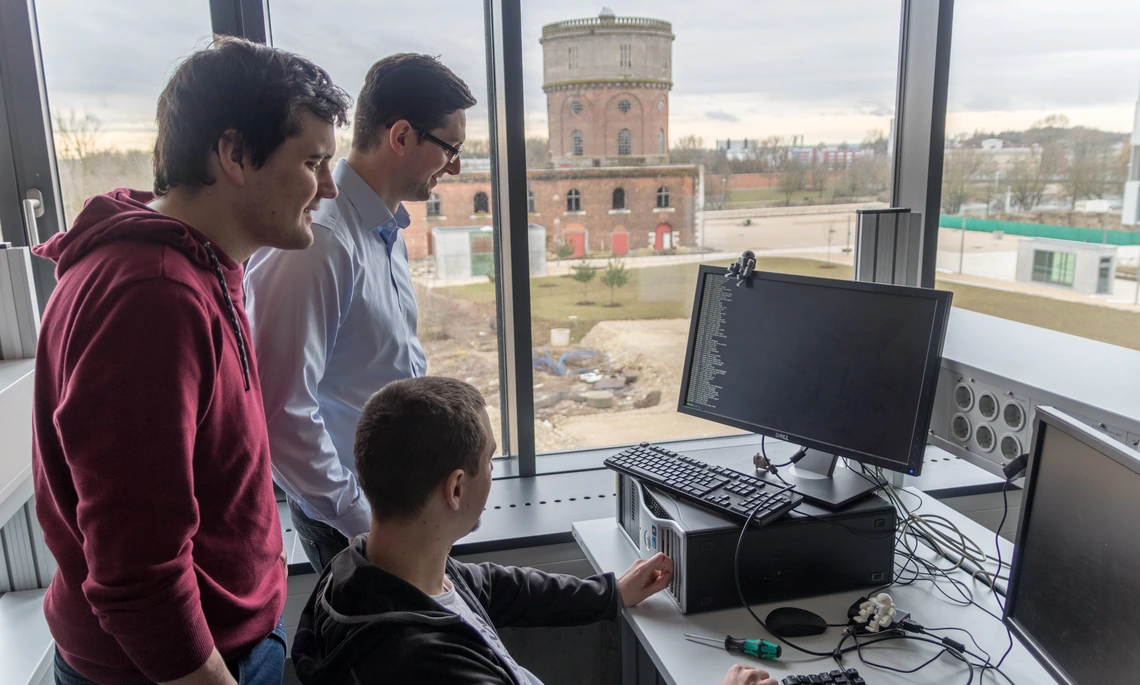Embedded systems have become an integral part of modern life. These systems are also increasingly being networked, as can be seen from topics such as Car2X communication and Industry 4.0. This leads to new types of cooperative decentralized applications.
Goals and idea
The goal of the laboratory is to provide students with a practical introduction to the research area of embedded systems. The interlocking of research and teaching activities as well as the modern equipped workstations achieve this goal. The laboratory is not only available for continuous internships, student projects and theses, but also for interesting applied research activities, also in cooperation with international partner universities.
Laboratory equipment and activities
Modern, well-equipped workstations, measuring systems and equipment as well as evaluation and simulation software are the basis for successful studies for students and successful research projects for scientists.
- Car2X communication: Here a test methodology is created to ensure performance characteristics. One result of this research is the specially developed simulation environment for Car2X applications "Artery" (https://github.com/riebl/artery). In addition, "Vanetza" (https://github.com/riebl/vanetza), an implementation of the European Car2X protocols ETSI ITS-G5, designed for scientific research, is being pushed forward.
- Performance determination and optimization of multicore systems for automotive and avionics systems. In the FORMUS³IC joint project, patterns for the parallelization of software for embedded systems with heterogeneous multicore/manycore architecture are being investigated and further developed. Performance, real-time, safety and energy efficiency are taken into account.
- Architecture of future highly reliable computer systems: Currently, highly reliable computer architectures (e.g. avionics computers for flight control) use standard microprocessors. The trend in the processor market is moving towards highly integrated multi-core architectures using complex techniques to increase medium throughput, moving away from deterministic systems.
This raises the question of the future architecture of avionics computers. In this context, a different criticality regarding the safety requirements has to be considered:
- Which redundancy concepts are derived from the respective criticality and how can these be realized in the future with the expected components?
- How can certifiable (deterministic) computer architectures be efficiently provided?
- How can cross channel data links (CCDL) for building redundant (3 to 4 channel) computers be implemented efficiently?
- Which basic SW (drivers, middleware) is required and which programming interfaces (APIs) should be used?
- How can the requirements regarding testability be fulfilled?
The embedded systems laboratory is closely linked to the Car2X communication laboratory in the CARISSMA research building.
Laboratory management and team
Prof. Dr. Ulrich Margull
Phone: +49 841 9348-4280
Room: A103
E-Mail: Ulrich.Margull@thi.de
Prof. Dr. rer. nat. Christian Facchi
Phone: +49 841 9348-3650
Room: P001
E-Mail: Christian.Facchi@thi.de
Prof. Dr.-Ing. Hans-Joachim Hof
Phone: +49 841 9348-2526
Room: D021
E-Mail: Hans-Joachim.Hof@thi.de










![[Translate to English:] Logo Akkreditierungsrat: Systemakkreditiert](/fileadmin/_processed_/2/8/csm_AR-Siegel_Systemakkreditierung_bc4ea3377d.webp)








![[Translate to English:] Logo IHK Ausbildungsbetrieb 2023](/fileadmin/_processed_/6/0/csm_IHK_Ausbildungsbetrieb_digital_2023_6850f47537.webp)


